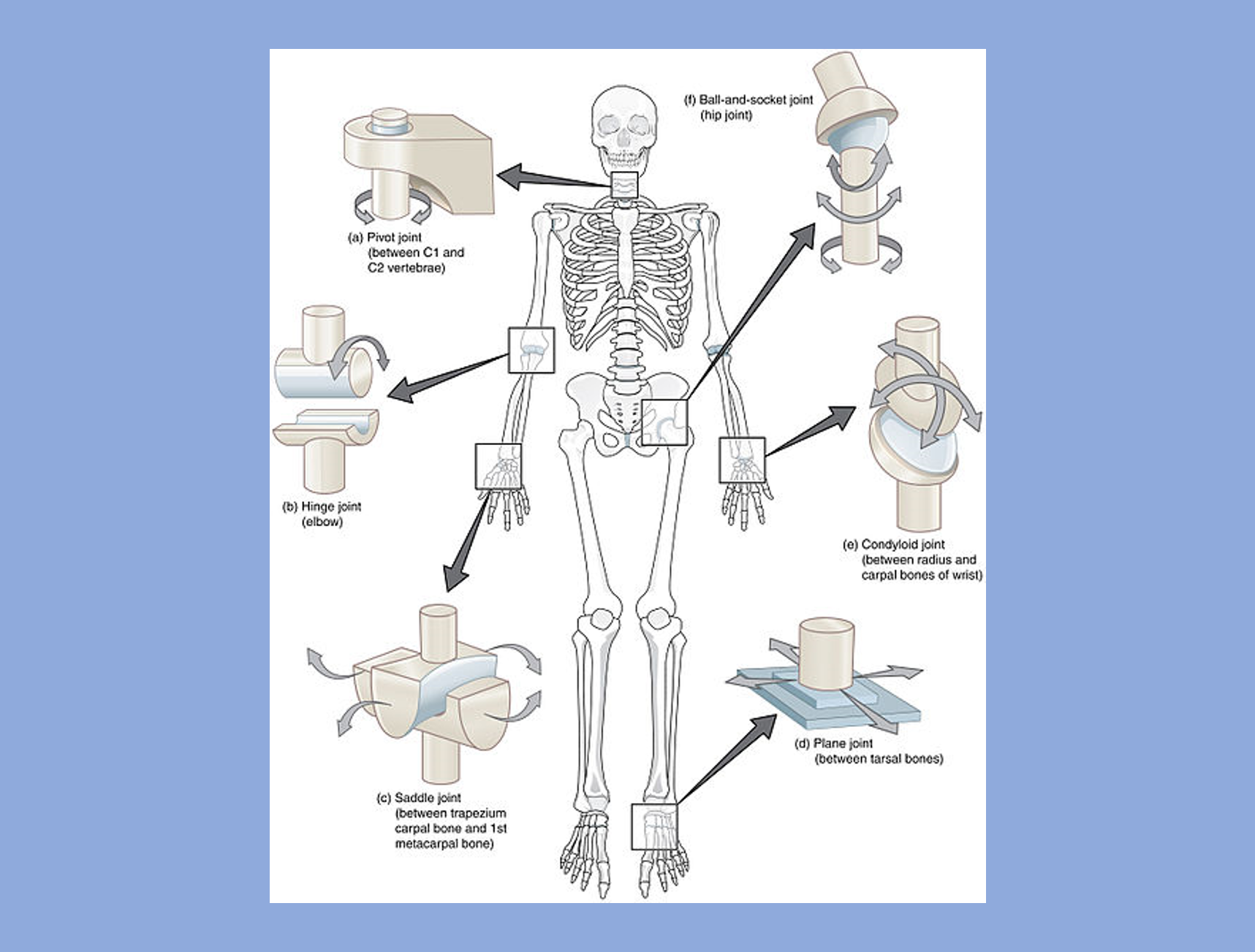Module 10: Joints & Biomechanics
Section outline
-

Joints and biomechanics are needed for most of the production of movement in the human body. Joints are the location where bones come together, and biomechanics focuses on how the body moves concerning the joined structures. Many joints allow for movement between the bones; at these joints, the articulating surfaces of the adjacent bones can move smoothly against each other. Biomechanics use the skeletal and muscular systems to provide excellent mobility. Most of the joints between the appendicular skeleton's bones are freely moveable. These joints allow the muscles of the body to pull on a bone, thereby producing movement of that body region.
("Types of Synovial Joints" by Betts et al. is used with a CC BY 4.0 license.)Upon completion of this module, you will be able to:
- Define the terminology: synarthrotic, diarthrotic, and amphiarthrotic as descriptions of the functional classes of joints. (CLO #1)
- Identify the structures, classifications, functions, and locations of the various types of joints in the human body.(CLO #2)
- Identify the structure of a synovial joint and describe the movements allowed by the synovial joint, and also specify an example of each in the human body. (CLO #1 and #4)
- Describe how muscles attach to bones to produce movement. (CLO #3)
- Define the following terms: lever, fulcrum, resistance, effort. (CLO #1)
- Explain the biomechanical principles and recognize the functioning of a lever system. (CLO #3 and #4)
To achieve these objectives:
- Read the Module 10 Introduction. (C.L.O #1), (M.L.O. #1)
- Read Chapters 11 and 12 in the textbook. (C.L.O #1, #2, #4), (M.L.O. #1, #2, #3, # 5)
- Test Your Knowledge sections are located at the end of each segment in the chapter. Answering the questions in these sections will aid in your knowledge to help you with the course. These questions will be relevant for information on testing and quizzes. (C.L.O #2, #4) (M.L.O. #2, # 3, #5)
- Complete the exercises in the "Practice" section at the end of the chapter. (C.L.O. #2, # 3) (M.L.O. #2, # 3)
- Complete the discussion activity. (C.L.O #1, #3) (M.L.O. #2, # 4, # 6)
- Complete the quiz. (C.L.O. #2, # 4) (M.L.O. #1, #2, # 4)
Module Pressbooks Resources and Activities
You will find the following resources and activities in this module at the Pressbooks website. Click on the links below to access or complete each item.
-
Read chapter, review the "Test Your Knowledge" questions, and complete the activities in the "Practice" section at the end of the chapter.
-
Read chapter, review the "Test Your Knowledge" questions, and complete the activities in the "Practice" section at the end of the chapter.
-
This quiz will have 10 questions. It is worth 20 points. You are allowed two attempts at this quiz. Correct answers will be available for review after the quiz is closed.
Directions for Instructors: Load questions from the Module 10 Question Bank.Set close date and then tick "Right answer" box under "After the quiz is closed" section of Review Options.
- Define the terminology: synarthrotic, diarthrotic, and amphiarthrotic as descriptions of the functional classes of joints. (CLO #1)
Background Colour
Font Face
Font Kerning
Font Size
Image Visibility
Letter Spacing
Line Height
Link Highlight
Text Colour
